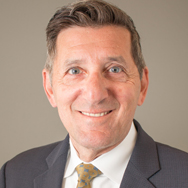Access: The TAC Blog
May 2019: Delivering Patient-Centered Care in the Context of Twelve-Step Programming

There are fundamental reasons that patients with opioid use disorder (OUD) should be offered access to medications approved to treat their condition. For one, the evidence base is compelling: Medication-assisted treatment (MAT) improves patients’ quality of life; reduces substance misuse; and lowers emergency department and hospitalization costs, hepatitis B and HIV rates, and overdose death rates. National organizations dedicated to health care quality have endorsed quality measures assessing the use of pharmacotherapy for OUD, and propose adding them to widely used performance measurement sets. The U.S. Department of Justice has signaled that refusing to permit access to MAT and discriminating against persons receiving MAT are violations of the Americans with Disabilities Act. For policymakers and providers seeking to promote patient-centered care, information about medications available to treat a condition should be shared freely and objectively so that patients and their family members can make informed decisions based on the best scientific information available.
Opportunities for Alignment
Medication-assisted treatment and other practice approaches that embody the principles of patient-centered care are considered by many to be incompatible with abstinence-based addiction treatment models rooted in 12-step programs. The tension that sometimes forms between providers who include medication in the treatment of OUD and those who do not threatens to jeopardize recent investments in prevention, treatment, and recovery, and to fracture a community of stakeholders who need to work together. It is important that addiction care stakeholders recognize and build on the overlap between treatment approaches that involve MAT and harm reduction considerations, and interventions based on 12-step programs. Too often these models are presented as “either/or.” In this post, we’d like to highlight the opportunities for “both.”
Considerable progress has been made in recent years towards improving the availability of medications and services used to manage OUD. Commercial payers, sometimes in collaboration with state leadership, are trending towards removing prior authorization requirements for buprenorphine. At least 51 Medicaid programs have assigned preferred status to buprenorphine, and lifetime treatment limits have all but disappeared. Training resources abound, offering vital supports to primary care clinicians adopting MAT as a new therapy and OUD as a new condition to treat. Support has burgeoned for harm reduction approaches such as syringe service programs, safe injection facilities, and naloxone distribution initiatives, saving lives through overdose reversals and reduced incidence of viral and bacterial infections.
And yet, only 27 percent of specialty addiction treatment centers offer MAT. This unfortunate discrepancy is the result of many factors, including a shortage of medical practitioners who have received a waiver from SAMHSA to prescribe buprenorphine for opioid dependence treatment; obstacles to billing for sufficient reimbursement; and, often, a philosophical orientation informed by a particular interpretation of 12-step programs. Proponents of MAT and harm reduction modalities supporting patient-centered care often face opposition from some segments of the 12-step recovery community. Understanding the positions of 12-step organizations on the role of MAT and harm reduction is a key step to crossing this quality chasm.
A Closer Look at 12-Step Literature
The official literature of Alcoholics Anonymous (i.e., approved by the AA General Service Conference) shows significant alignment with harm reduction and MAT approaches. One AA pamphlet, The AA Member—Medications and Other Drugs, leads with the suggestion that “No AA member should ‘play doctor’; all medical advice and treatment should come from a qualified physician.” The pamphlet continues, “Because of the difficulties that many alcoholics have with drugs, some members have taken the position that no one in A.A. should take any medication. While this position has undoubtedly prevented relapses for some, it has meant disaster for others… they feel guilty because they are convinced that ‘A.A. is against pills.’”
The foundational text Alcoholics Anonymous explicitly supports the use of medications for withdrawal management, as in the chapter Working With Others: “Sometimes you will have to call a doctor and administer sedatives under his direction.” Further, the book notes the important role of clinicians, explaining in the chapter The Family Afterward that “We are convinced that a spiritual mode of living is a most powerful health restorative… But this does not mean that we disregard human health measures. God has abundantly supplied this world with fine doctors, psychologists, and practitioners of various kinds. Do not hesitate to take your health problems to such persons. Try to remember that though God has wrought miracles among us, we should never belittle a good doctor or psychiatrist. Their services are often indispensable in treating a newcomer and in following his case afterward.”
The traditions of AA mirror central tenets of harm reduction. For example, Tradition 3 is: “The only requirement for AA membership is a desire to stop drinking.” AA members recognize that relapse can be part of recovery, and encourage even chronic relapsers to “keep coming back.” Indeed, many people begin attending meetings while still actively drinking alcohol or using substances. The fellowship’s response is to welcome these individuals with open arms. The refrain “We are glad you are here, especially the newcomer” is commonly used in preambles at the beginning of meetings. The underlying premise of Tradition 3 — in text and in practice — is meeting people where they are in their recovery, which is consistent with the core principles of harm reduction.
Nationwide, a patient-centered orientation of care within a framework of harm reduction is beginning to emerge in clinical practice. Guided with evidence amassed over the past few years, clinicians are revisiting restrictive protocols originally issued for buprenorphine care. Recent literature in an influential academic journal offers new clinical recommendations with respect to the incidence of relapse, patients’ use of other substances and benzodiazepines, and the expected duration of treatment. These evolving approaches both embody the model of harm reduction and are consistent with AA’s Tradition 3.
Another major 12-step organization, Narcotics Anonymous (NA), issued a pamphlet titled “Narcotics Anonymous and Persons Receiving Medication-Assisted Treatment” that notes, “Narcotics Anonymous does not express opinions — either pro or con — on civil, social, medical (including medically assisted treatment), legal, or religious issues.” Echoing AA, NA’s Tradition 3 states that the only requirement for membership is a desire to stop using. NA delegates to individual groups the question of whether members receiving MAT should be allowed to share their experience during meetings: “Each group is free to make its own decision on recovery meeting participation and involvement in group services for those receiving medication assistance for drug addiction.” The pamphlet encourages members receiving medications to find different meetings if they encounter strong opinions about MAT from other members.
Building Common Ground
There are promising examples in the addiction treatment community of providers beginning to weave MAT and harm reduction principles together with 12-step-based models. The Hazelden Betty Ford Foundation developed a clinical protocol and training materials to intentionally integrate MAT with 12-step concepts and therapies. Social Model Recovery Systems has served as a ‘provider champion,’ educating other 12-step-based providers that MAT is — as the organization’s medical director Donald Kurth asserts — “well worth including in our armamentarium.” Such initiatives can play an instrumental role in state, payer, and stakeholder efforts to promote dialogue about MAT and harm reduction.
Nationwide, treatment providers are revising discharge policies to better achieve the patient-centered goal of keeping patients engaged in care despite lapses in complete abstinence or in strict adherence to program rules. Too often, patients are administratively discharged — kicked out of treatment — for continued use of alcohol or substances, i.e., their presenting symptom. Encouragingly, providers are trending towards harm reduction in this respect. Administrative discharges have recently declined by half, from 16 percent of all discharges in 2002 to 7 percent of all discharges in 2010.
There are opportunities for policymakers as well. Regulators, accreditors, and payers managing provider networks may benefit from understanding the inclusive positions of 12-step organizations in their efforts to incorporate MAT and harm reduction models into policy requirements. Those seeking to mitigate ambivalence toward MAT and harm reduction must have a grasp of 12-step literature sufficient to address the concerns emanating from the recovery community. Yet to suggest that pharmacotherapy should replace the value offered by 12-step-based providers is a blind spot. There are historical reasons why 12-step-based providers staffed by individuals with lived experience are so common, including stigma and longstanding financial neglect of addiction research and services. The focus of the 12-step framework on addressing the spiritual dimensions of recovery can be a valuable part of OUD disease management; The American Society of Addiction Medicine acknowledges the spiritual manifestations of addiction in both its definition of addiction and its clinical assessment criteria. Rather than discount the abstinence-based provider network, stakeholders should seek opportunities to support 12-step-based providers and staff in integrating medication-based therapies and patient-centered harm reduction principles into their treatment paradigm.
Much of this work is unfolding. California, Massachusetts, and other states have issued guidance clarifying that residential providers are expected to admit patients treated by clinicians with MAT. Missouri requires all SUD treatment providers to offer or arrange for all forms of MAT. Virginia requires residential treatment organizations to demonstrate access to MAT through specified methods, and has issued policy guidance to establish harm reduction principles within its buprenorphine provider network. State Medicaid agencies implementing section 1115 SUD demonstrations must ensure that residential treatment facilities either offer MAT on-site to residents or facilitate off-site access, and are revising licensure, certification, policy, and contracting to promulgate and operationalize these new requirements.
In general, states are setting expectations and developing policies to promote access to MAT to better align with the established scientific consensus, the interest of national quality measurement organizations, recognition of potential legal liabilities, and, perhaps above all, the goal of providing patient-centered care to individuals who want to reclaim their lives. These objectives are achievable within the context of a 12-step framework for recovery, which is a prominent and longstanding feature of the specialty treatment field.
Disclaimer: The views expressed in this post are those of the authors and are not intended to represent the views of Alcoholics Anonymous or Narcotics Anonymous.






